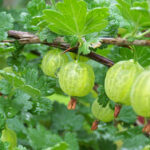During the period between 1899 and 1906, the Split Rock area was heavily logged by the Merril and Ring Lumber Company, harvesting most of the Norway and White Pine in the. They also operated a short rail road during their logging operation, which followed the Split Rock River. Remnants of this operation still exist in the water today. Logging was the main interest in the area until about 1920 when the prime timber pretty much ran out.
Because of a huge storm Nov. 28, 1905, damaging 29 ships, Congress appropriated $75,000 to build a lighthouse and fog horn on this bluff of shear cliff rock known as Split Rock. United States Steel was the owner of one third of all ships damaged or lost that day. The area had earned the reputation of being the most dangerous waters in the world, as seven ships lost that fateful day sank within 15 miles of Split Rock.
Construction of the Light House and keeper’s quarters was completed in 1909. The 370,000 candle power beacon was operated by the U.S. Lighthouse Service until 1939,when the Service became the U.S. Coast Guard. Decommissioned in 1969, it was taken over by the State of Minnesota in 1971. The Minnesota Historical Society operates the complex as it is restored to its appearance back in the 1920’s. Split Rock Lighthouse is now part of the State Park system and is open for tours through the summer months.
Recently completed the Gitchi Gami Bike Trail, running from Split Rock north to Gooseberry Falls and on to Beaver Bay, is a paved riding/walking trail that will provide you with some beautiful views of Lake Superior.
Camping along the North Shore is abundant. Split Rock Lighthouse State Park has pack in/tent sites available. A short distance further up the North Shore is Gooseberry Falls State Park. As early as 1670 the Gooseberry River appeared on explorer maps of the region. Populated by many different tribes of Indians, in 1870 the area was opened up for commercial fishing.
In 1934 the Civilian Conservation Corps started a project to develop the park. Building many stone and log structures they also established the campground. The park officially became part of the Minnesota State Park system in 1937, with a visitor center commemorating the days of the CCC opening in 1996.
The premier feature of the Park is Gooseberry Falls itself. A two step falls that is a very popular spot during the hot days of summer. A good combination with the many hiking trails and the large modern camp ground. Complete with all modern facilities and hookups, the campground can handle a rig of most any size.
Many different animals populate the North Shore region, by far the most common is the white tail deer. Their population is so high they have become a danger to motorists. Drive with caution, they love to graze along side the road, and are most likely to jump out at dusk or dawn. You may even see a black bear, as they’ve been known to visit the park.
Family activities abound along the North Shore, plenty to see and do. The only thing better then a road trip up the North Shore of Lake Superior would be to do the whole circle route around the lake.
Source: Minnesota Historical Society
Minnesota Dept. of Natural Resources

